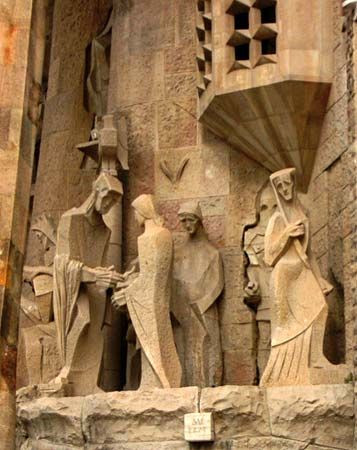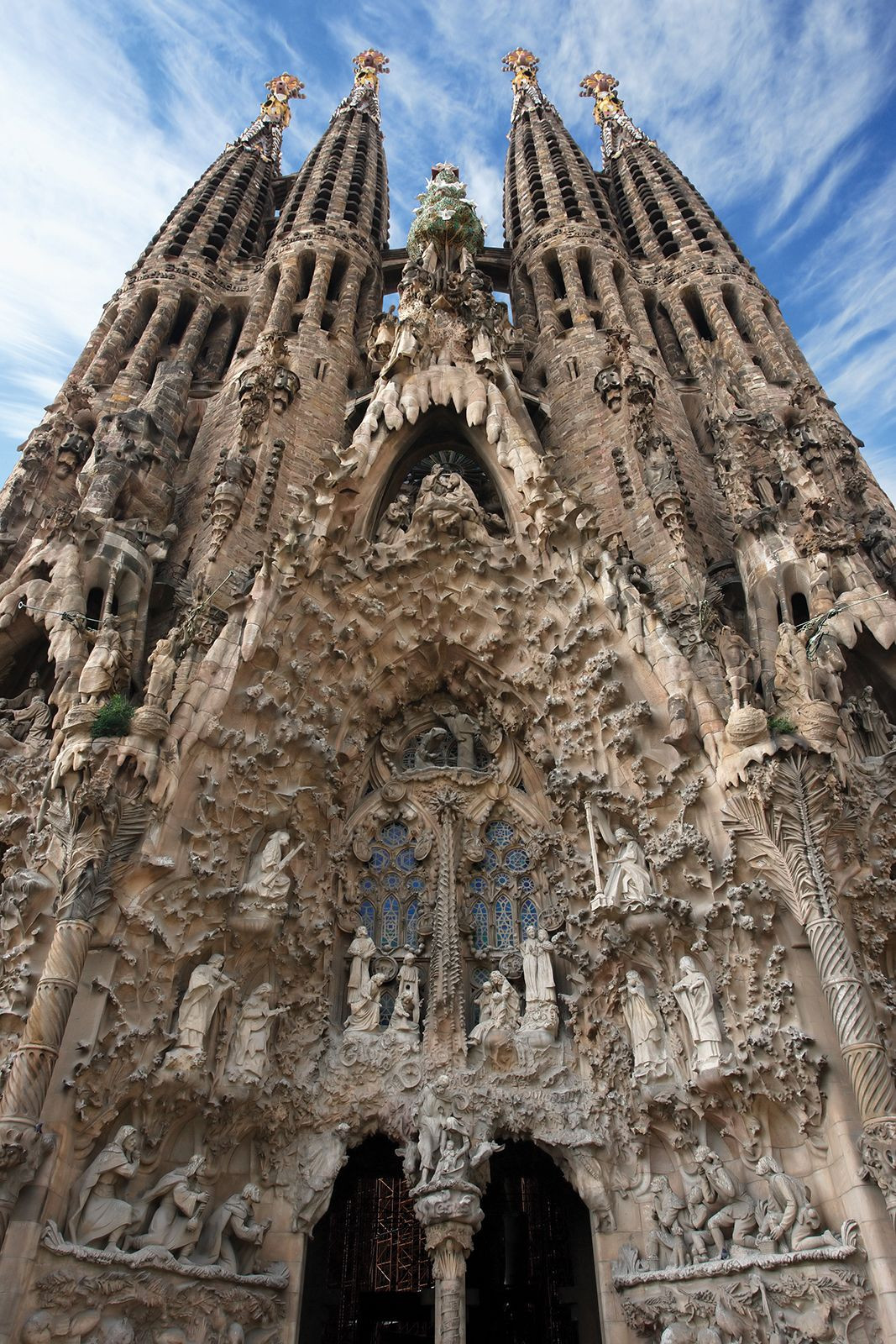The Basilica Of The Sagrada Familia, a breathtaking Roman Catholic minor basilica in the heart of Barcelona, Spain, stands as a testament to the visionary genius of Antoni Gaudí. Construction on this iconic landmark began in 1882, and remarkably, it remains unfinished in the 21st century, a living, breathing work of art that continues to evolve. Celebrated for its tactile, organic forms, the Sagrada Familia is more than just a church; it’s a symbol of Barcelona, an architectural marvel that dramatically punctuates the cityscape with its soaring towers and daring design. This extraordinary structure, with its bold flying buttresses and spiraling towers, is an unforgettable sight, seamlessly blending into the urban fabric while simultaneously defying architectural norms.
Initially conceived by architect Francisco de Paula del Villar, the project was fueled by donations intended to bolster Christianity in Barcelona, a city experiencing a rise in secularism. In 1883, Antoni Gaudí took the helm as chief architect, a role that would define the rest of his life. Gaudí radically transformed Villar’s Neo-Gothic blueprint, envisioning a structure that would be structurally self-sufficient, eliminating the need for traditional internal bracing or external buttresses. The result was a design that transcended mere modification, blossoming into a complex, symbolic forest of helicoidal piers, hyperboloid vaults and walls, and a hyperbolic paraboloid roof. Gaudí envisioned the Sagrada Familia as his Expressionist interpretation of a 20th-century cathedral, a space where visual symbolism would unlock the profound mysteries of the Christian faith. His dedication deepened over time, becoming increasingly devout, and by 1910, he dedicated himself almost entirely to the Sagrada Familia, eventually residing on site, fully immersed in its creation within his workshop.
Beyond his religious devotion, Gaudí was deeply engaged in the Renaixensa, a vibrant artistic and political movement in Catalonia. This revival sought to revitalize Catalan arts, crafts, and cultural identity, which had long been suppressed by the central government in Madrid. The Basilica of the Sagrada Familia rose to become a powerful religious symbol of the Renaixensa in Barcelona, embodying the spirit of Catalanism.
 Sagrada Família: sculpture of Pontius Pilate
Sagrada Família: sculpture of Pontius Pilate
Gaudí’s original designs and models, tragically mostly lost during the Spanish Civil War, revealed a colossal basilica capable of holding 13,000 worshippers. Based on a traditional basilica plan in the shape of a Latin cross, the structure incorporates porticoes on three sides. The east facade, known as the Nativity facade, celebrates the birth of Jesus. Opposite, on the west, the Passion facade depicts the crucifixion of Jesus. The main entrance will be the Glory facade, illustrating humanity’s path to divine glory. Above, eighteen towering, spindle-shaped towers ascend skyward, each representing significant biblical figures: twelve for the Apostles, four for the Evangelists, one for the Virgin Mary, and the tallest, central tower dedicated to Jesus Christ. Each of the three facades is framed by four bell towers representing the Apostles, with notable substitutions: St. Barnabas, St. Matthias, and St. Paul replace Judas, St. John, and St. Matthew on certain facades. The six central towers, honoring Jesus and Mary surrounded by the Evangelists, will act as lanterns, bathing the main nave in natural light from above.
 Sagrada Família: Nativity facade
Sagrada Família: Nativity facade
At the time of Gaudí’s death in 1926, only the Nativity facade, one bell tower, the apse, and the crypt were complete. His disciple, Domènec Sugranyes, took over the project, continuing Gaudí’s vision. Gaudí, buried beneath the basilica, was aware he would not witness its completion, famously stating, “The patron of this project is not in a hurry.” The works of Gaudí, including the Nativity facade and the crypt, earned UNESCO World Heritage status in 1984, recognizing their unparalleled artistic and cultural significance. In 2010, despite being unfinished, the Sagrada Familia was consecrated for religious worship by Pope Benedict XVI and officially designated a minor basilica, a testament to its spiritual importance.
Construction has persisted since Gaudí’s passing, navigating numerous challenges. The remaining Nativity facade bell towers were finished in 1930, but the Spanish Civil War disrupted progress, and the loss of Gaudí’s original plans and models posed significant hurdles. The current design, while based on surviving materials and reconstructions, incorporates modern adaptations, some of which have faced criticism. The foundation for the Passion facade was laid in 1954, with its four bell towers completed in 1976. The central nave vaulting reached completion in 2000 and was roofed in 2010. The COVID-19 pandemic briefly halted construction in early 2020, but work resumed later that year. The tower of the Virgin Mary, soaring 138 meters above the apse, was inaugurated in December 2021, adorned with an illuminated twelve-pointed star. In 2022, the towers dedicated to the Evangelists St. Mark and St. Luke reached 135 meters. Current projections aim for completion of the remaining towers and the majority of the basilica’s structure by 2026, marking the centennial of Gaudí’s death. Upon completion, the Basilica of the Sagrada Familia is poised to be the tallest church building in the world, a lasting monument to Gaudí’s boundless imagination and unwavering faith.
